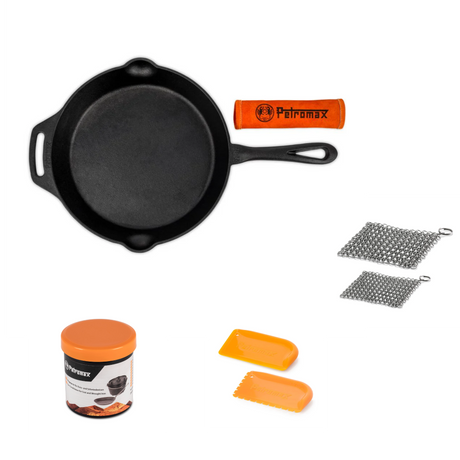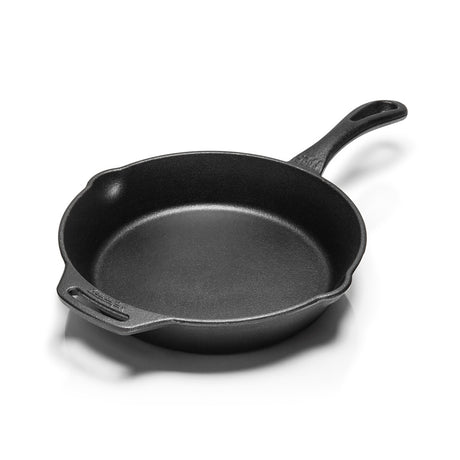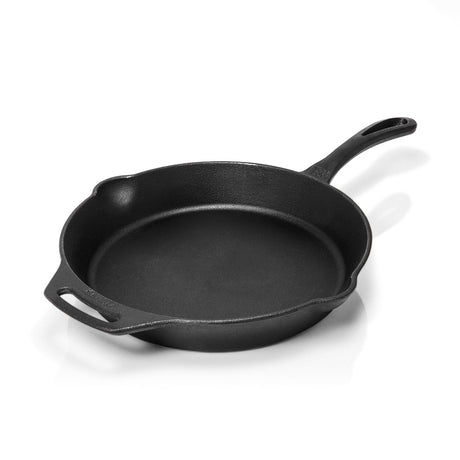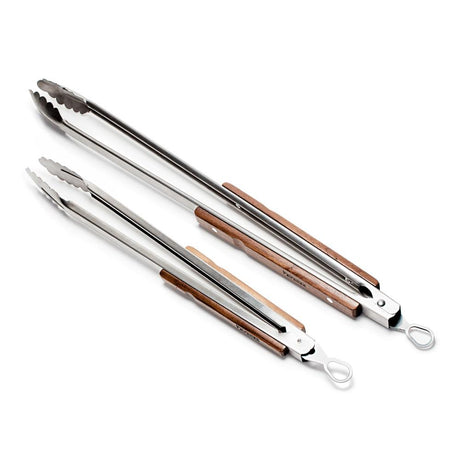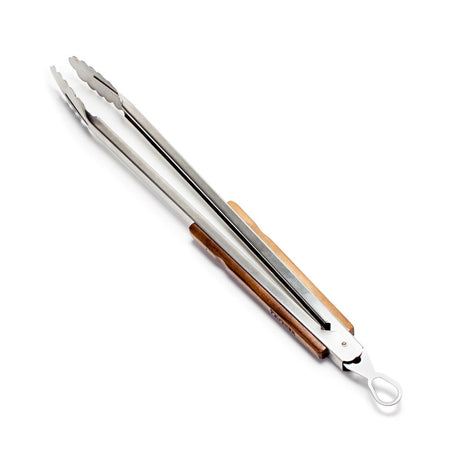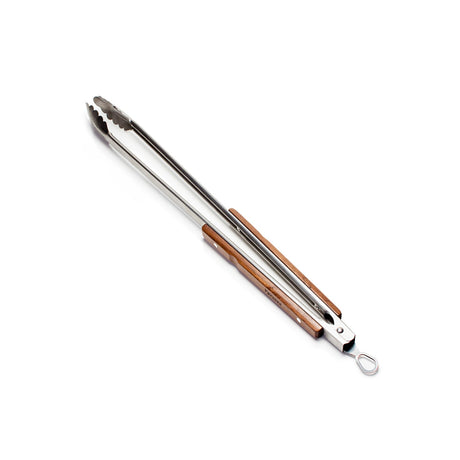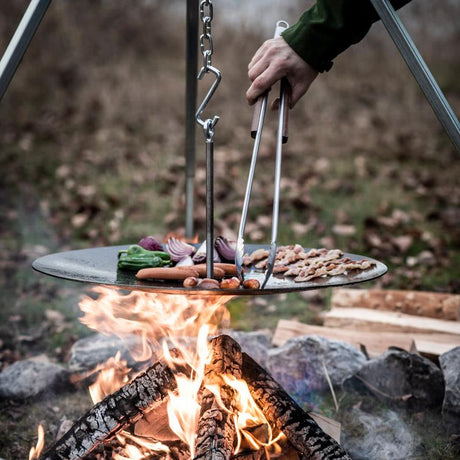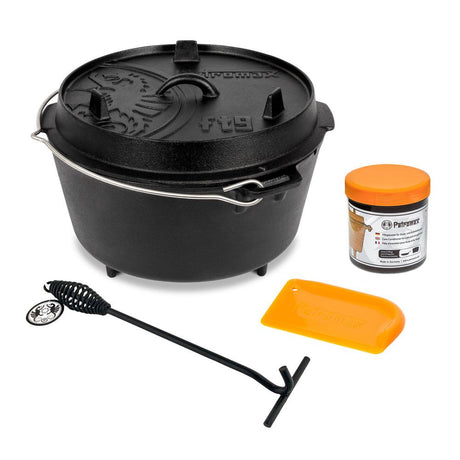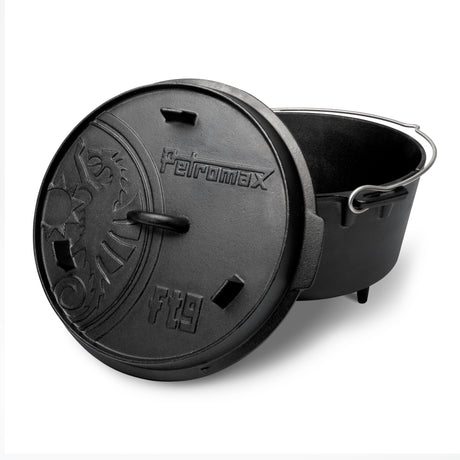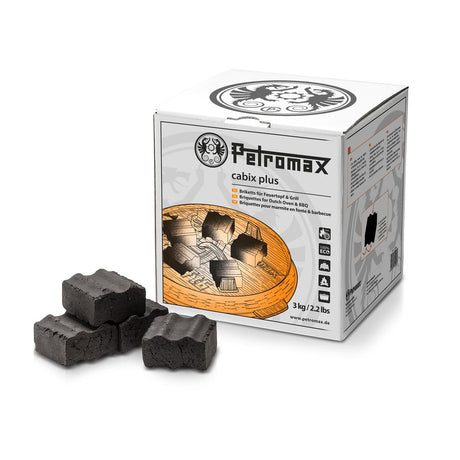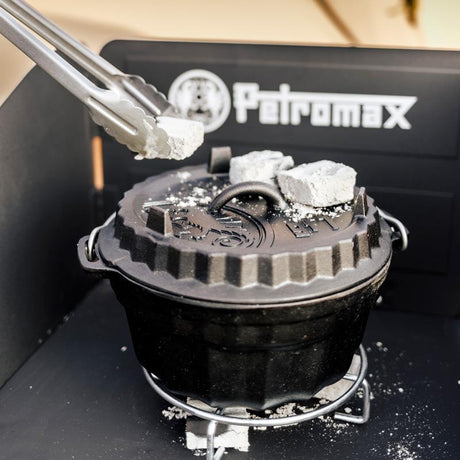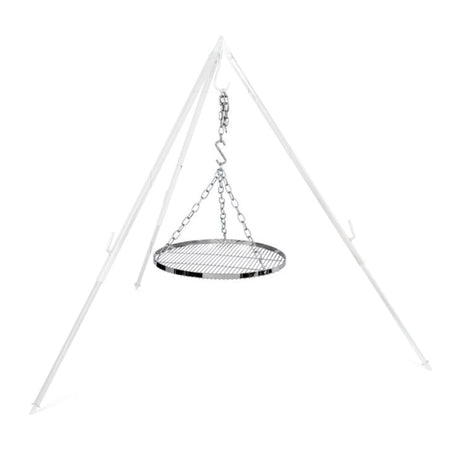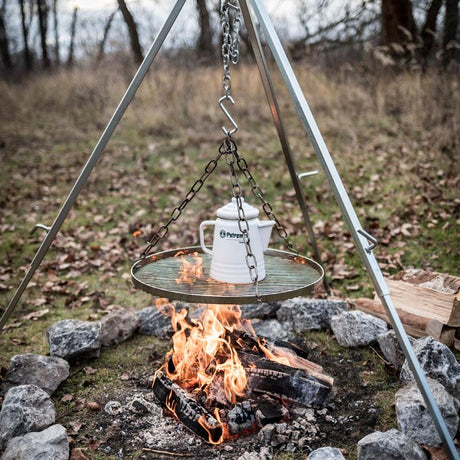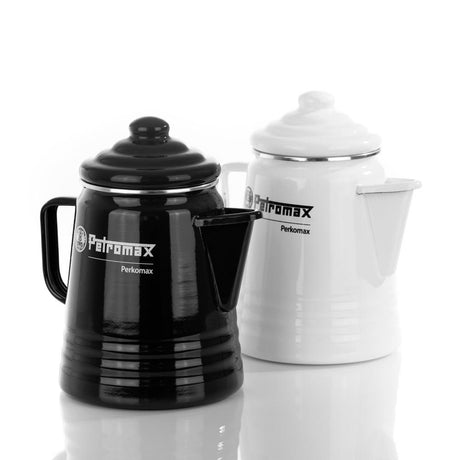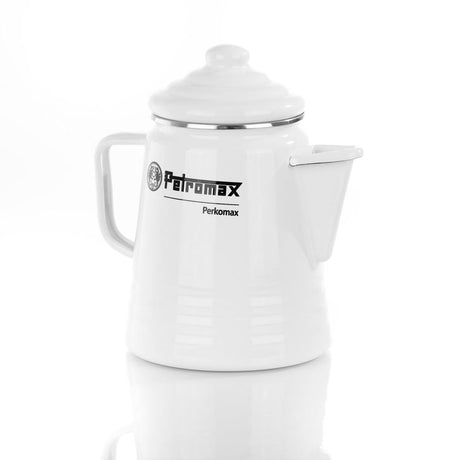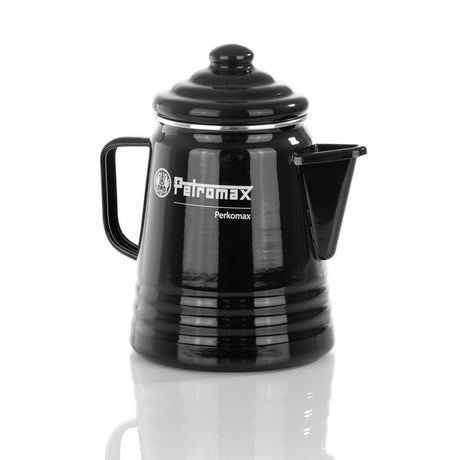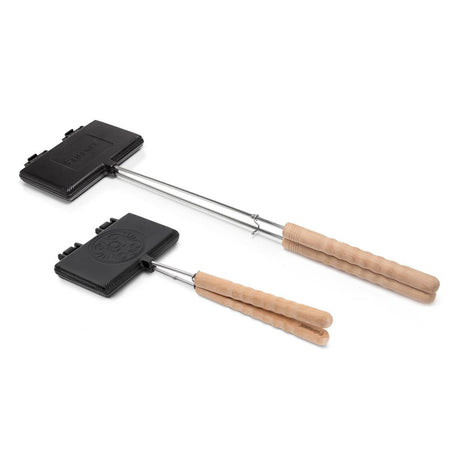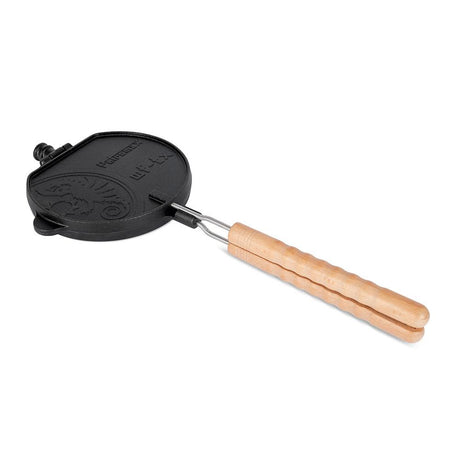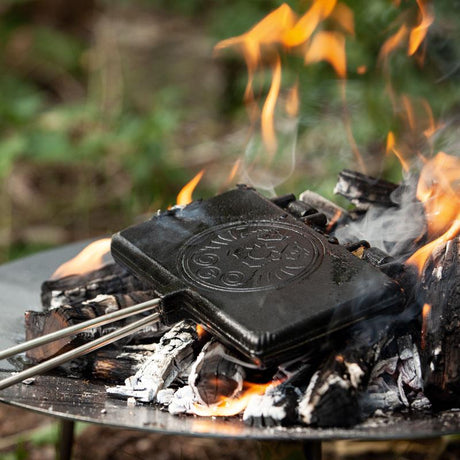
Juicy steaks from the grill are a real treat for the palate and represent pure enjoyment. But to conjure up the perfect steak, you need more than just a hot grill and high-quality meat. In this blog article, you'll find out everything you need to know to grill your steak to perfection. From choosing the best meat to the right preparation and determining the ideal degree of doneness - we'll guide you step by step to a culinary highlight that will tantalize your taste buds. Whether you're an experienced barbecue master or just starting out, our tips are guaranteed to make your next steak a success.
The signs of quality: how to recognize high-quality meat
Preparation is everything: how to prepare your steaks properly for the barbecue
Open fire! The optimum grilling temperature and techniques for the perfect steak
Steak test: find out what cooking level your meat is at
The art of steak selection: How to find the perfect piece of meat
When grilling a perfect steak, it's not just about the grilling technique, but above all about choosing the right meat. Different types of meat are ideal for steaks, including beef, veal, lamb and pork. The quality of the meat is crucial for optimum grilling results. Look for a rich, dark red color and make sure that the meat is well hung. A clear marbling, i.e. the fine distribution of fat in the meat, ensures that the steak remains juicy and tastes intense. The service at a good butcher's should ensure that the steak is fresh and cut to the desired thickness of around three to five centimetres.
The days when large pieces of meat were carelessly cut in supermarkets are over. Today, you can choose from a variety of cattle breeds, including Wagyu, Charolais, Aberdeen-Angus, Galloway and Chianina. Each breed offers its own flavor and varies in price. A real barbecue enthusiast knows exactly which cut of meat he wants to serve his guests and knows the ABCs of BBQ. Here is a brief overview of the most popular types of meat:
- Roast beef and rump steak: these classic cuts come from the back of the beef, between the shoulder and the leg. The rib eye in front, also known as entrecôte, is also included.
- Fillet: This sheer muscle meat is particularly tender and juicy. The name is derived from the French "fillet", which means groin.
- T-bone: This cut comes from the back of the beef, just like the rump steak or the Tafelspitz, which lies on the side of the beef tail. The Tafelspitz, often underestimated, offers an excellent grilled flavor, especially due to its fat crust.
- Mayor's cut: This noble piece of meat comes from the inner part of the rump and used to be reserved for city leaders or church officials. It is particularly tender and juicy.
- Flank steak: This cut is taken from the rear flank of the beef and is becoming increasingly popular.

The signs of quality: how to recognize high-quality meat
To ensure that you put the best possible steak on the barbecue, you should know a few key criteria for high-quality meat. Firstly, the meat should be aged for at least three weeks. Each slice of steak should also be at least four centimetres thick for optimum grilling results.
The taste of a steak may be subjective, but there are clear standards when it comes to meat quality and preparation. Whether entrecôte, flank steak, T-bone or sirloin - the grain of the meat is crucial. A fine marbling, i.e. the distribution of fat lines in the meat, plays a major role in the development of flavor. The fat melts during grilling and gives the steak juiciness and flavor. However, large fat inclusions can cause the meat to burn quickly, as they can cause burn marks. An even edge of fat on the side of the steak, on the other hand, helps to protect the meat from excessive heat.
It is therefore worth paying attention to quality when buying meat and investing a little more money to get a special taste experience. If you buy high-quality meat, you should not cook it on a disposable grill. That would be like taking part in a Formula 1 race in a pedal car. Good meat deserves to be prepared in a way that brings out its quality.
Preparation is everything: preparing your steaks correctly for the barbecue
Before a steak goes on the barbecue, it needs to be prepared properly to achieve the best result. Firstly, it is important to take the meat out of the fridge around two hours before grilling so that it reaches room temperature. This ensures that the steak is cooked evenly through later.
A frequently discussed question is whether the meat should be salted or oiled before grilling. Both methods have their supporters, but meat that is well-dried will not stick to a clean and preheated grill rack. Salt only penetrates the surface during roasting and does not reach the core.
Know the cooking stages
If you order a steak in a restaurant, you probably already know which cooking level you prefer. "Rare" lovers like their steak almost raw, only lightly seared. "Medium rare is well browned on the outside and juicy on the inside. "Medium" means that the meat has a dark crust and a red center. "Well done" is completely cooked through.
Preparation before grilling
Now that you have been careful when buying the meat, it's time to prepare the steak. Let the steak rest at room temperature before putting it on the grill. This helps to cook the meat evenly.
A rim of fat on the steak not only provides additional flavor, but also has a positive effect on the cooking process. Even if you are not a fan of fat, you should only trim the edge of the fat after grilling. Fat is an important flavor carrier.
Before seasoning, use a sharp knife to lightly cut into the edge of the fat at a distance of about one centimeter without cutting into the meat. This incision prevents the steak from bulging when grilling and ensures even cooking.
Salting and seasoning
You should salt the steak about 15 minutes before you put it on the grill. The choice of salt is a matter of taste, but fine salt flakes such as pyramid salt or Murray River Salt dissolve better on the meat and ensure a nice crust. You don't need more seasoning at first, as pepper burns during grilling and should only be added afterwards.
You don't need to oil the meat, as it won't stick to a clean, preheated grill rack if it is well prepared. So nothing stands in the way of a perfect barbecue experience.

Open fire! The optimum grilling temperature and techniques for the perfect steak
Temperature for grilling
A decisive factor for a good steak is the high temperature when grilling. Steak lovers often prefer an infrared burner or a beefer, as these appliances can quickly generate extreme heat. If you are using a charcoal grill, create an intense bed of embers from charcoal briquettes and supplement them with pieces of steakhouse charcoal made from quebracho wood. As soon as the coals are glowing and your thermometer in the lid reads around 270°C, you can get started.
Tease out the roasted flavors
To give your steak the perfect crust and keep it juicy on the inside, you need high initial temperatures. These promote the Maillard reaction, which is responsible for the delicious roasted flavors. Therefore, heat the grill to a high temperature first. Have a fireproof bowl ready to place the steak in after grilling.
Place the steaks on the grill
First grill the steak directly over the heat source. A gas grill should be set to the highest level, while the core temperature in a charcoal grill should be between 230 and 290°C. With the lid closed, grill the steaks for around three to four minutes on one side. As soon as the meat can be easily removed from the grill, it is time to turn it over. In order to cook the meat evenly, each side should only be seared once. Then place the steaks in the indirect area of the grill to finish cooking.
The optimum grilling time
The perfect steak requires not only the best quality meat, but also the right grilling time and technique. Preheat your grill to around 300°C and place the steak on the greased grill in the direct heat. A tried and tested trick is to pull the fat edge of the steak over the grill to grease it. Use grill tongs to avoid punctures that could cause the valuable meat juices to be lost.
Leave the steak on the grill for around 90 seconds before turning it 45 degrees to create a nice grill pattern. After another 90 seconds, turn the steak over to the other side and repeat the process. Then place the steak in the indirect heat area to achieve the desired degree of doneness.
Lower the temperature
While the steaks are resting, close the ventilation controls in the lid to lower the temperature to a maximum of 120°C. This lower temperature is ideal for cooking the steaks to the perfect core temperature. Use a thermometer to check the temperature accurately. Transfer the steaks from the tray to the indirect section of the grill to finish cooking.
Grilling steak with bone
For bone-in steaks, which require a longer cooking time, it is important to bring the meat gently and slowly to the core temperature. Place the bone side towards the charcoal so that it is cooked evenly. The optimum core temperature for a perfect steak is 54°C. Once the steak has reached this temperature, leave it to rest for a few minutes. Now you can salt and pepper the steak and enjoy.

Steak test: find out what cooking level your meat is at
To ensure that your steak is cooked to exactly the right degree, you can use a simple trick: the handball test. With this test, you can determine within a few seconds whether your steak is rare, medium or well done. All you need is your own hand!
The handball test
-
Rare (English)
- Lightly touch your thumb and index finger together.
- Press the area below the thumb with the other index finger.
- The flesh should feel very soft, similar to a sponge.
- Core temperature: 45-52°C
-
Medium rare
- Touch your thumb and middle finger together.
- Press on the same area below the thumb.
- The meat should feel slightly yielding.
- Core temperature: 53-56°C
-
Medium (pink)
- Touch your thumb and ring finger together.
- Press on the area below the thumb.
- The meat should yield only minimally.
- Core temperature: 57-59°C
-
Well Done
- Touch your thumb and little finger together.
- Press on the area below the thumb.
- The meat should feel hard but elastic.
- Core temperature: 60-63°C
We strongly recommend that you do not cook your steak all the way through, otherwise it will become tough and dry, regardless of the quality of the meat. A perfect steak should be juicy and tender, which you can achieve by using one of the first three cooking levels.
Digital thermometer: The precise helper
If you want to be absolutely sure that your steak reaches the ideal temperature, you can use a precise digital thermometer. These practical helpers give you an exact temperature reading and help you to cook your steak to perfection.
Overview of cooking levels and temperatures
| Cooking level | Cooking temperature |
|---|---|
| Rare (English) | 45-52°C |
| Medium rare | 53-56°C |
| Medium (Pink) | 57-59°C |
| Well Done (Through) | 60-63°C |
No matter how you prefer your steak, with these tips you are guaranteed to grill it to perfection. Enjoy your perfectly grilled steak and impress your guests with your knowledge and skill on the grill!

